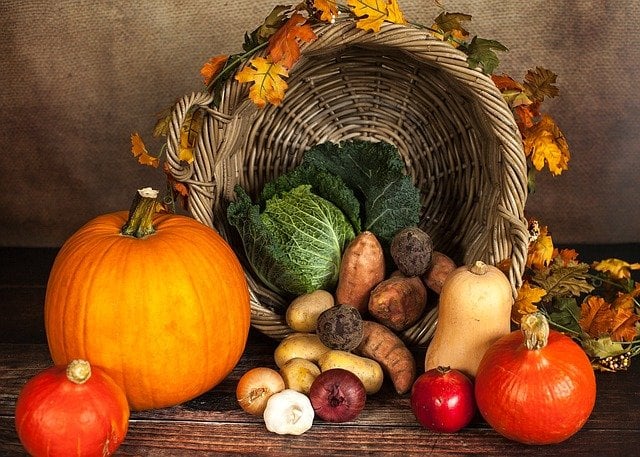 Happy Thanksgiving from Winn Technology Group. There is quite a bit of history associated with Thanksgiving and also a lot of unknowns. Regardless of how it started and where it is a day in which we are to give thanks for everything we have in our lives and be with family. Here we look at a bit of the history and some fun facts about Thanksgiving.
Happy Thanksgiving from Winn Technology Group. There is quite a bit of history associated with Thanksgiving and also a lot of unknowns. Regardless of how it started and where it is a day in which we are to give thanks for everything we have in our lives and be with family. Here we look at a bit of the history and some fun facts about Thanksgiving.
“Colonists and Wampanoag Indians shared an autumn harvest feast in 1621 in Plymouth, Massachusetts, that is widely acknowledged as one of the first Thanksgiving celebrations. But some historians argue that Florida, not Massachusetts, may have been the true site of the first Thanksgiving in North America. In 1565, nearly 60 years before Plymouth, a Spanish fleet came ashore and planted a cross in the sandy beach to christen the new settlement of St. Augustine. To celebrate the arrival and give thanks for God’s providence, the 800 Spanish settlers shared a festive meal with the native Timucuan people.”
“Turkey wasn’t on the menu at the first Thanksgiving. Venison, duck, goose, oysters, lobster, eel, and fish were likely served, alongside pumpkins and cranberries (but not pumpkin pie or cranberry sauce!).”
“Thanksgiving Day did not become an official holiday until Northerners dominated the federal government. While sectional tensions prevailed in the mid-19th century, the editor of the popular magazine Godey’s Lady’s Book, Sarah Josepha Hale, campaigned for a national Thanksgiving Day to promote unity. She finally won the support of President Abraham Lincoln. On October 3, 1863, during the Civil War, Lincoln proclaimed a national day of thanksgiving to be celebrated on Thursday, November 26.”
“On average, 276 million Americans eat around 46 million turkeys on Thanksgiving.”
“The Macy’s Thanksgiving Day Parade was originally called the "Macy's Christmas Parade" to kick off the holiday shopping season. Held in 1924, the first parade included monkeys, bears, camels, and elephants borrowed from the Central Park Zoo instead of the traditional character balloons we know today.”
“If you want to see what Thanksgiving was really like back in the 1600s, the historic attraction Plymouth (or Plimoth) Plantation stays true to its historic roots. You can even celebrate Thanksgiving at the site, which is modeled after a colonist's home and a Wampanoag site. Guests and members can order advance tickets (which include two-day admission) to attend a Thanksgiving dinner. The table-groaning feast features authentic courses like a corn pudding and fish fricassee, tales of colonial life and old-timey songs.”
"Jingle Bells," the classic Christmas song written by James Lord Pierpont in 1857, wasn't meant to be about Christmas. Originally titled "One Horse Open Sleigh," the ditty was meant to be sung on Thanksgiving. When it was reprinted in 1859, however, the name was changed to "Jingle Bells, or the One Horse Open Sleigh," and was prescribed for Christmas.”
“In 1980, the average turkey weighed less than 19 lbs. Today, they tip the scales at about 31lbs on average.”
“Harry Truman is frequently credited with being the first president to pardon a turkey, but there's more to the story. He was the first to receive a ceremonial turkey from the National Turkey Federation – and he had it for dinner. Turkey-pardoning wasn't a formal practice until 1989. John F. Kennedy was the first to let his Thanksgiving turkey go, followed by Richard Nixon, who sent his turkey to a petting zoo. In 1989, George H.W. Bush formalized the turkey pardoning tradition.”
“260 tons of Thanksgiving leftovers led to the invention of the TV dinner. In 1953, the Swanson food company grossly overestimated the amount of Thanksgiving turkey consumers would buy and were left with over two and a half tons of the frozen bird meat, according to the Smithsonian magazine. One salesman for the company, Gerry Thomas, came up with a solution to get rid of the turkeys before they went bad—a solution that would turn a massive profit. He ordered 5,000 aluminum trays and assembled a simple meal of turkey, peas, and sweet potatoes. After hiring a passel of women to arrange the meals in the trays on an assembly line, the Swanson company sold the meals at 98 cents each. In today's money, that is about 9 and a half dollars.”





